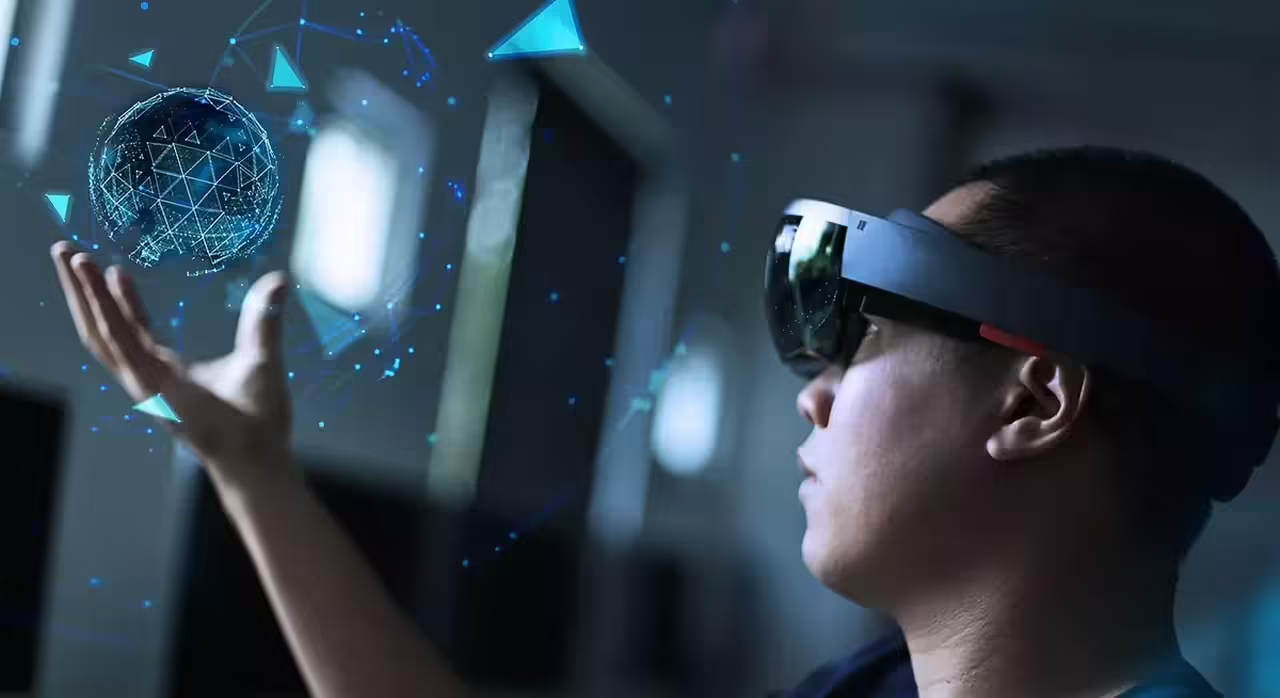
Virtual reality has been a constantly evolving technology over the past decades. Since its inception in the 1960s, it has gone through several stages, from early applications in military and aviation simulators to more recent gaming and entertainment applications. One of the main barriers to entry for users interested in experiencing virtual reality is the cost and the need to use an expensive VR viewer. However, today, there are many viewerless virtual reality options that offer immersive experiences at a more affordable price point.
What is viewerless virtual reality?
Viewerless virtual reality is a way to experience virtual reality without the need for an expensive VR viewer. Instead, it uses technologies such as motion tracking and motion sensors to deliver an immersive experience without the need for a headset. Some of the most popular options include systems like Oculus Quest, which uses a combination of motion tracking and wireless controllers to deliver a high-quality virtual reality experience.
How does viewerless virtual reality work?
Viewerless virtual reality uses a variety of technologies to deliver an immersive experience. For example, some systems use motion tracking technology, such as Leap Motion’s hand motion tracking technology, to allow users to interact with virtual objects without the need for a physical controller.
Other technologies, such as the camera-based motion tracking technology used by Oculus Quest, allow the user to move in virtual space and interact with virtual objects using wireless controllers. These systems also use motion sensors to detect the user’s movement and adjust the user’s view accordingly, which helps create a more immersive virtual reality experience.
What types of applications are suitable for virtual reality without viewfinders?
Viewerless virtual reality is suitable for a wide variety of applications, from gaming to educational and training applications. Some of the most popular applications include virtual reality games that use motion tracking technology to allow the user to interact with the virtual world, as well as training applications that use motion tracking technology to simulate real-life situations.
There are also education applications that use virtual reality without visors to allow users to explore virtual environments and learn about specific topics. In general, any application that requires interaction with the virtual world can benefit from viewerless virtual reality technology.
What are the benefits of viewerless virtual reality?
Viewerless virtual reality has several benefits, including a more affordable price compared to traditional VR headsets. In addition, because it does not require a headset, it is easier to use and is more accessible to a wide variety of users. The motion tracking technology also offers a more immersive experience than other virtual reality systems without motion tracking.
Technologies that enable the virtual reality experience without visors
There are several technologies that enable the virtual reality experience without viewfinders. Some of the most common ones are described below:
Motion tracking: this technology uses cameras and motion sensors to track the user’s position and movement in physical space and replicate them in the virtual world. For example, the motion tracking technology used by Oculus Quest allows the user to move in virtual space and interact with virtual objects using wireless controllers.
Motion controllers: These wireless controllers are used in combination with motion tracking technology to allow the user to interact with the virtual world. The motion controllers can detect the position and movement of the user’s hands, allowing interaction with virtual objects and control of the virtual reality experience.
Haptic technology: Haptic technology uses haptic feedback to create the sensation of touching virtual objects. Haptic devices can simulate the sensation of textures, shapes and physical resistance, adding an additional level of immersion to the virtual reality experience.
High-resolution displays: High-resolution displays used in viewerless virtual reality systems can provide a crisp, detailed visual experience that is critical for immersion in the virtual world. For example, the Pico Neo 3 viewfinderless VR system uses high-resolution displays and motion-tracking technology to deliver a high-quality VR experience.
Voice recognition technology: Some viewerless virtual reality systems use voice recognition technology to allow the user to interact with the virtual world through voice commands. For example, the Amazon Echo Frames viewerless virtual reality system Amazon Echo Frames uses Alexa voice recognition technology to provide an audio-based virtual reality experience.
Devices for experiencing virtual reality without visors
Here are some of the most popular devices for experiencing virtual reality without visors:
Oculus Quest 2: Oculus Quest 2 is one of the most popular viewerless virtual reality devices on the market. With motion tracking technology and wireless controllers, Oculus Quest 2 offers a high-quality virtual reality experience without the need for cables or an external computer.
PlayStation VR: PlayStation VR is Sony’s virtual reality device used with the PlayStation 4 or PlayStation 5 console. PlayStation VR features a wide variety of virtual reality games and applications and uses PlayStation Move motion controllers to provide a viewer-free virtual reality experience.
Samsung Gear VR: Samsung Gear VR is a viewfinder-free virtual reality device that is used with Samsung-branded cell phones. By inserting the cell phone into the device, it becomes a display for the virtual reality experience. Bluetooth controllers are used to interact with the virtual world.
Google Daydream View: Google Daydream View is a viewerless virtual reality device used with compatible Android cell phones. The device has a Bluetooth motion controller that is used to interact with the virtual world.
Amazon Echo Frames: Amazon Echo Frames are glasses with viewerless virtual reality technology that are used with Amazon’s virtual assistant, Alexa. Users can access a variety of audio-based virtual reality applications and experiences through the glasses.
Applications and uses of virtual reality without visors
Viewerless virtual reality has a wide variety of applications and uses in a variety of fields. Some of the most common ones are described below:
Entertainment: Entertainment is one of the most common fields in which viewerless virtual reality is used. Users can enjoy immersive and immersive virtual reality games, movies and experiences without the need for visors.
Education: Viewerless virtual reality is also increasingly being used in the field of education to provide immersive learning experiences. Students can explore virtual places and situations, allowing them to learn in a more interactive and meaningful way.
Training: Viewerless virtual reality is increasingly being used in the training field to provide realistic and safe simulations in high-risk or dangerous situations. For example, workers can train in emergency or dangerous situations without taking real risks.
Therapy: Wearable virtual reality is also increasingly being used in therapy to treat various mental health disorders and problems. For example, VR without visors has been used to treat anxiety, post-traumatic stress disorder and depression.
Architecture and design: Viewerless virtual reality is used in the field of architecture and design to provide an immersive and realistic experience of designs. Architects and designers can explore their designs in a virtual environment before creating them in the real world.
Advantages and disadvantages of virtual reality without viewfinders
Virtual reality (VR) is a technology that has been constantly evolving and growing over the past few decades. Most people associate VR with the use of display devices, such as VR goggles or headsets, that allow you to immerse yourself in a virtual world. However, virtual reality without visors is an attractive alternative that is gaining more and more popularity. Below, we will discuss the advantages and disadvantages of virtual reality without visors:
Advantages:
Accessibility: viewerless VR is more accessible and affordable than VR with viewers, as you are not required to purchase expensive equipment. Instead, a mobile device or computer can be used to access viewfinder-free VR.
Comfort: By not having to wear a VR helmet or goggles, the experience is much more comfortable. There are no wires or cumbersome devices to limit your movement or distract you from the experience.
Versatility: VR without visors allows you to move freely and explore different virtual environments. You can walk, sit or even lie down while enjoying the experience.
Intuitiveness: Glasses-free VR uses head motion tracking and touch controls to interact with the virtual environment. This makes the experience more intuitive and user-friendly for users.
Disadvantages:
Graphics quality: The graphics quality of VR without viewfinders is not as high as VR with viewfinders. The resolution may be lower and the image may appear less sharp and realistic. In addition, the lack of a display device may limit the ability to experience full immersion in the virtual environment.
Technical limitations: VR without viewfinders depends on the device you are using. If the device does not have sufficient processing power or is not designed for VR, it may limit the ability to run advanced VR experiences.
Limited interaction – VR without viewfinders is generally limited to touch interaction and head movements, which can limit the ability to interact with the virtual environment in a more realistic and natural way. This can also make the experience less immersive.
Limited experiences – VR without viewfinders may offer a limited VR experience compared to VR with viewfinders. By not having a display device, the experience may not be as immersive and exciting as what you get with a VR headset or goggles.
How does viewerless virtual reality work?
Viewerless virtual reality (VR) uses devices such as cell phones, tablets, computers or TV screens to provide a VR experience. The idea is that the user interacts with a virtual environment on the device’s screen, using head motion tracking and touch controls to control the experience.
Head motion tracking is done by sensors built into the device or by the device’s camera, which detects the head movement and transmits it to the VR application. Touch controls are used to interact with the virtual environment, such as touching the screen to select objects or scroll through the virtual environment.
In addition, some non-viewfinder VR devices also use other types of sensors, such as motion sensors and accelerometers, to improve the accuracy of motion tracking and interaction with the virtual environment.



![Image 1. [Map] City Navigator Middle East and Northern Africa NT for Garmin Garmin devices that support and X](/wp-content/uploads/images/random/imagen-4.AVIF)



